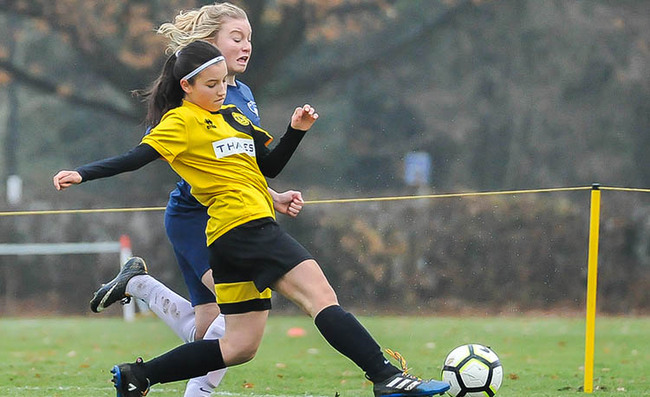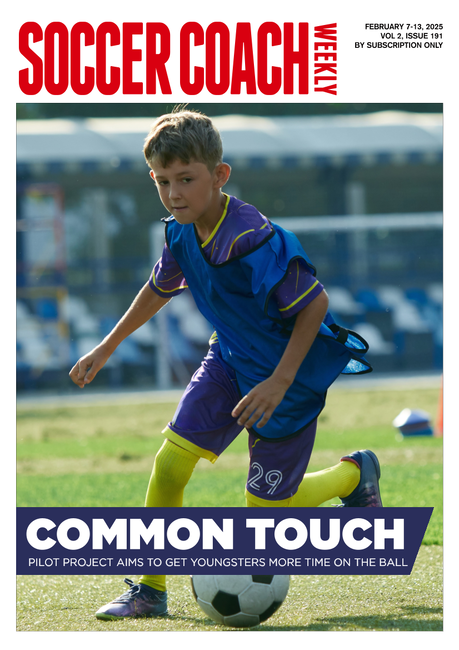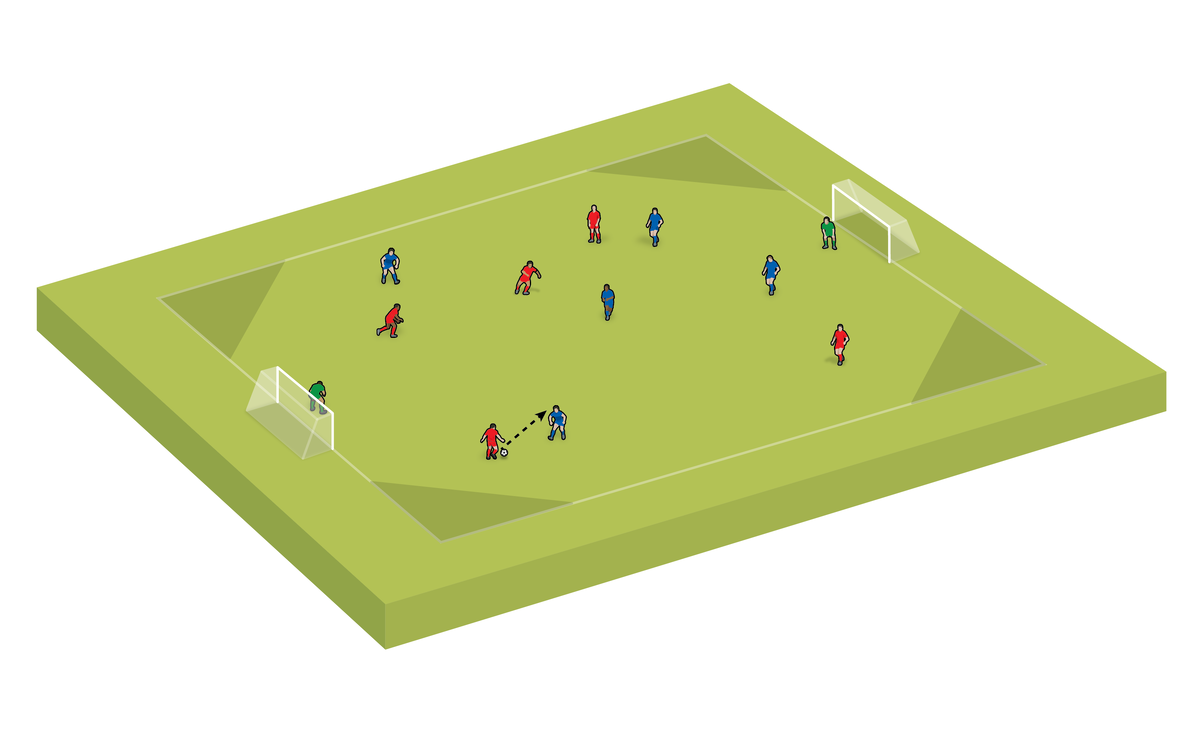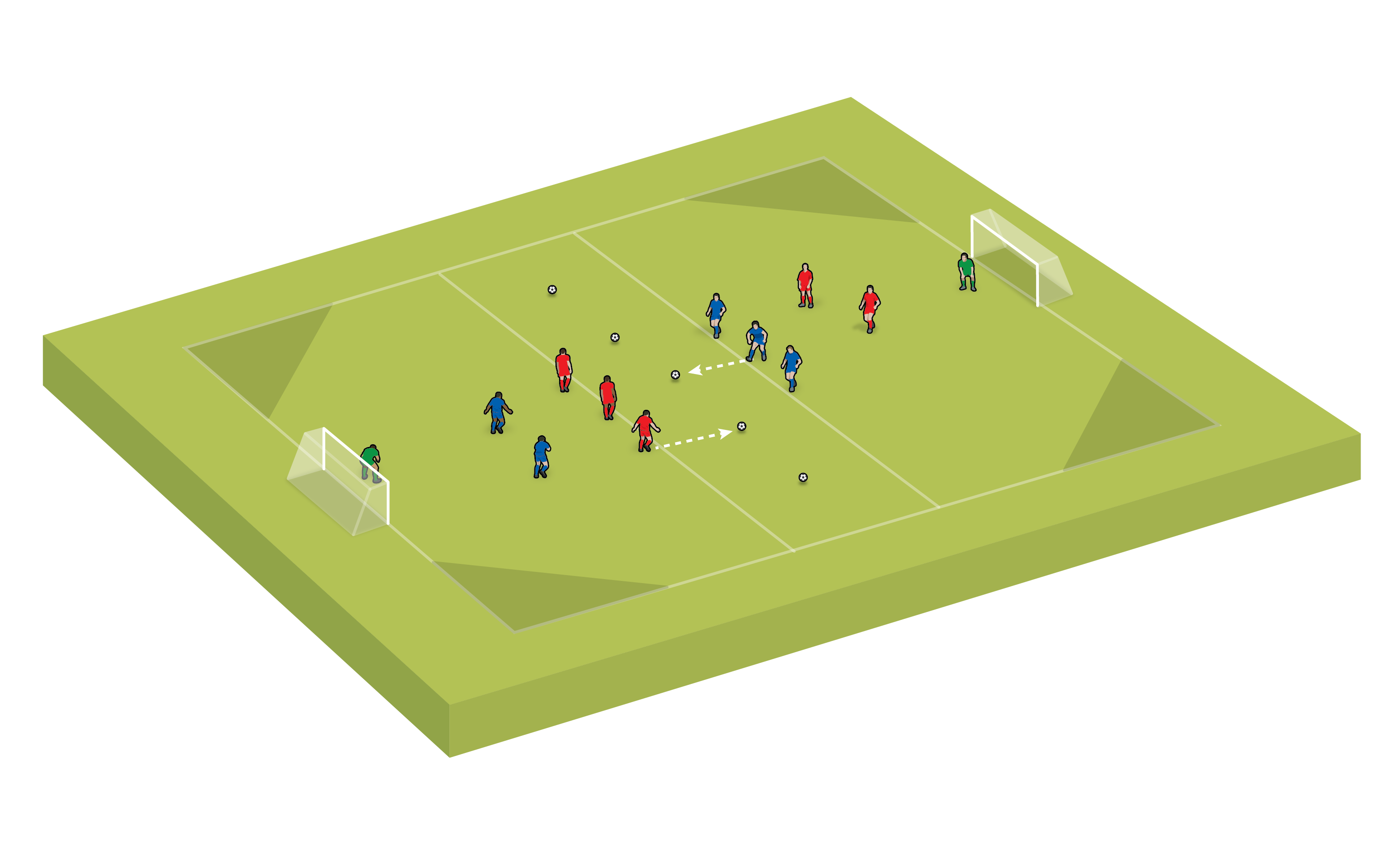'Art of defending is predict and prepare'
Aston Villa academy coach SAM HUDSON talks body shape, winning physical battles and incorporating defending into your sessions with STEPH FAIRBAIRN
Sam Hudson has spent almost 10 years as a coach.
Roles coaching at camps and clubs in the US, including New Jersey Soccer Group, were followed by time spent at academies in the UK, including Derby County.
Now an Academy coach at Aston Villa, Sam has recently published his first book, Football in a Pandemic, an insight into the strategies and tactics used during the 2020- 21 Premier League season.
I asked Sam for some of his technical expertise on the role of the defender, talking about the key attributes required, how we can build defending into our practices, and the role both body shape and physicality play in defending...
SCW: Say you had to pick out key principles for a defender - what would they be?
SH: "I always layer it as defending as an individual, then defending as a pair, then defending as a unit. So if you can’t necessarily defend as the individual, the pair and the unit are compromised.
“Focusing on defending as an individual, the principles of play are: applying pressure to the ball, to the opponent, or providing cover or balance if you’re part of a pair or a unit; staying compact with your teammates, both in front, behind and then side to side as well, and being able to delay attacks.
“Then, as I said, it’s layering it, focusing those principles as an individual. Then, once you’re at a good level as an individual, you can look at the pair and at the unit."
SCW: How can we integrate defensive principles into our practices?
SH: "I think you’ve got to try and make defending more fun than a lot of players potentially view it as.
"I’ll remind players that if we’re doing defending, we’re going to need some players to attack and vice versa. So you can always give them that carrot.
“From a unit perspective, the low block and emergency defending is an important part of the game - every team will have to defend the penalty area at some point.
"So a game I’ve used quite a lot is a clean sheet game - whoever scores first has one or two minutes to keep a clean sheet.
"That brings in the real psychological element of defending - you’ve scored your goal, now can you consolidate?
"I think you’ve got to try and make defending more fun than a lot view it as..."
"You can get quite a lot of match realism actions in that, because it’s a common theme in the game - as soon as you concede, the first thought is, ’how can we get back into the game?’. So, as defenders, you have to react and adapt accordingly.
“If you’ve got the luxury of multiple coaches in a session, you can split yourself in and out-of-possession. But if you are coaching on your own, you can always set defensive or out-of-possession challenges for the players, even though you’re working on the in-possession topic.
“So if you’re working on shooting, can you have a blocking competition with your defenders? If you’re working on crossing and finishing, which defender can win the most headers?
"One I like doing is a clean-sheet clock. So if we’re doing a small-sided game, I’ll time how long it takes the attacker to score a goal. It gives defenders that carrot of ’let’s see how long we can keep a clean sheet - can we even keep a clean sheet throughout the whole practice?’.
"It works both ways. If you’re working on defending as your session, then you give the attackers challenges as well."
SCW: What are some good ways that you can teach defenders about body shape?
SH: "For me, the art of defending is predicting and preparing. It’s thinking about the what ifs, and it’s just as important as the actual defensive action itself.
"Something I try and use is just the use of your hips, particularly for the backline.
"So if the backline is set, try and defend as side-on for as long as possible. Because if you’re side-on, you can push forward to press if it’s in front of you, and drop off and recover behind if the ball goes over or around.
"If you’re side-on, you can do those movements, forwards and backwards, much easier than if your hips are fully square and you’re facing the pitch. It’s then a little bit more difficult to turn and recover. Whereas, if you’re side-on, it’s just a sliding movement forward.
"Also, look away from the ball as much as you can, without forgetting that the ball is important, because that will affect how you set your hips and how you set your body shape.
“Something that’s really important for body shape is trying to block with your closest foot, because good attackers can twist and turn both ways, they can add disguise and can make your life really difficult.
"If you always block with your stronger foot, which I see quite a lot of young players do, before you know it you’re facing the wrong way, or your legs are tangled and you can get beaten one-on-one."
Related Files
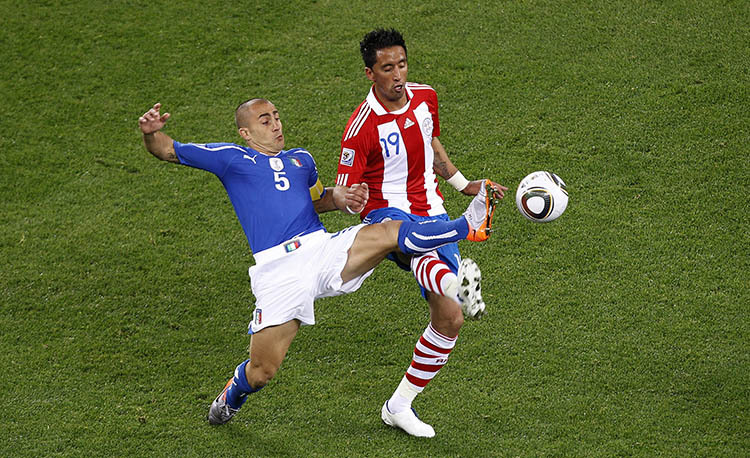
SCW: A lot of youth players are still building up their strength - you’ll have some that are a foot taller than others, with different strength levels. How do you get around that? What defensive strategies can you teach them as they build their strength up?
SH: "It goes back a little bit to the body shape stuff, where the art of defending is predicting and preparing.
"So you might have a strength deficit, but can you make that up with your positioning? If you know they’re stronger than you, can you either prepare earlier and pinch the ball before it even gets there and beat them with intelligence and agility?
"If you know you might lose the first part of the individual duel, maybe drop off a little bit and stay compact, defending with your mates essentially, to then make the next phase of the attack harder.
“I think within the modern game, the speed of play, and acceleration and deceleration, is just as important as strength now.
"For me, that’s what separates the quality of divisions and leagues - the speed of play. And that goes for defenders as well - how quickly they can get out to the ball, press, accelerate, decelerate, recover, how quickly they can create compactness and get close to their teammates.
"If you can’t compete in strength, predict and prepare for the next phase..."
“So if you can’t compete in the strength department, predict and prepare for the next phase. It might be you predict and go forward, intercept and cut it out at the source.
"Or it might be you prepare and defend a little bit deeper, or a little bit differently, or with compactness, and use your teammates to compete against players that might be physically more developed.
“But I would never encourage players not to duel, because a lot of duelling is timing and body shape.
"You can compete against players that are physically bigger than you because, ultimately, as you get older, players will always be bigger or smaller than you, because of the way humans just grow differently. It’s in your physical makeup, in your DNA.
"So you can’t always rely on ’they’re bigger than me, I can’t defend against that’.
“I guess there’s a psychological element to it as well, that confidence to actually go and duel.
"Sometimes it just takes a couple of successful goes and then players might think ’Actually, I can compete physically - they might have an edge on me more often than not, but there are moments where I can compete physically’."
"The main factor was there were no fans. The home and away bias that has always existed in professional sport totally went..."
Newsletter Sign Up
Coaches Testimonials

Gerald Kearney, Downtown Las Vegas Soccer Club

Paul Butler, Florida, USA

Rick Shields, Springboro, USA

Tony Green, Pierrefonds Titans, Quebec, Canada
Subscribe Today
Discover the simple way to become a more effective, more successful soccer coach
In a recent survey 89% of subscribers said Soccer Coach Weekly makes them more confident, 91% said Soccer Coach Weekly makes them a more effective coach and 93% said Soccer Coach Weekly makes them more inspired.
*includes 3 coaching manuals
Get Weekly Inspiration
All the latest techniques and approaches
Soccer Coach Weekly offers proven and easy to use soccer drills, coaching sessions, practice plans, small-sided games, warm-ups, training tips and advice.
We've been at the cutting edge of soccer coaching since we launched in 2007, creating resources for the grassroots youth coach, following best practice from around the world and insights from the professional game.
